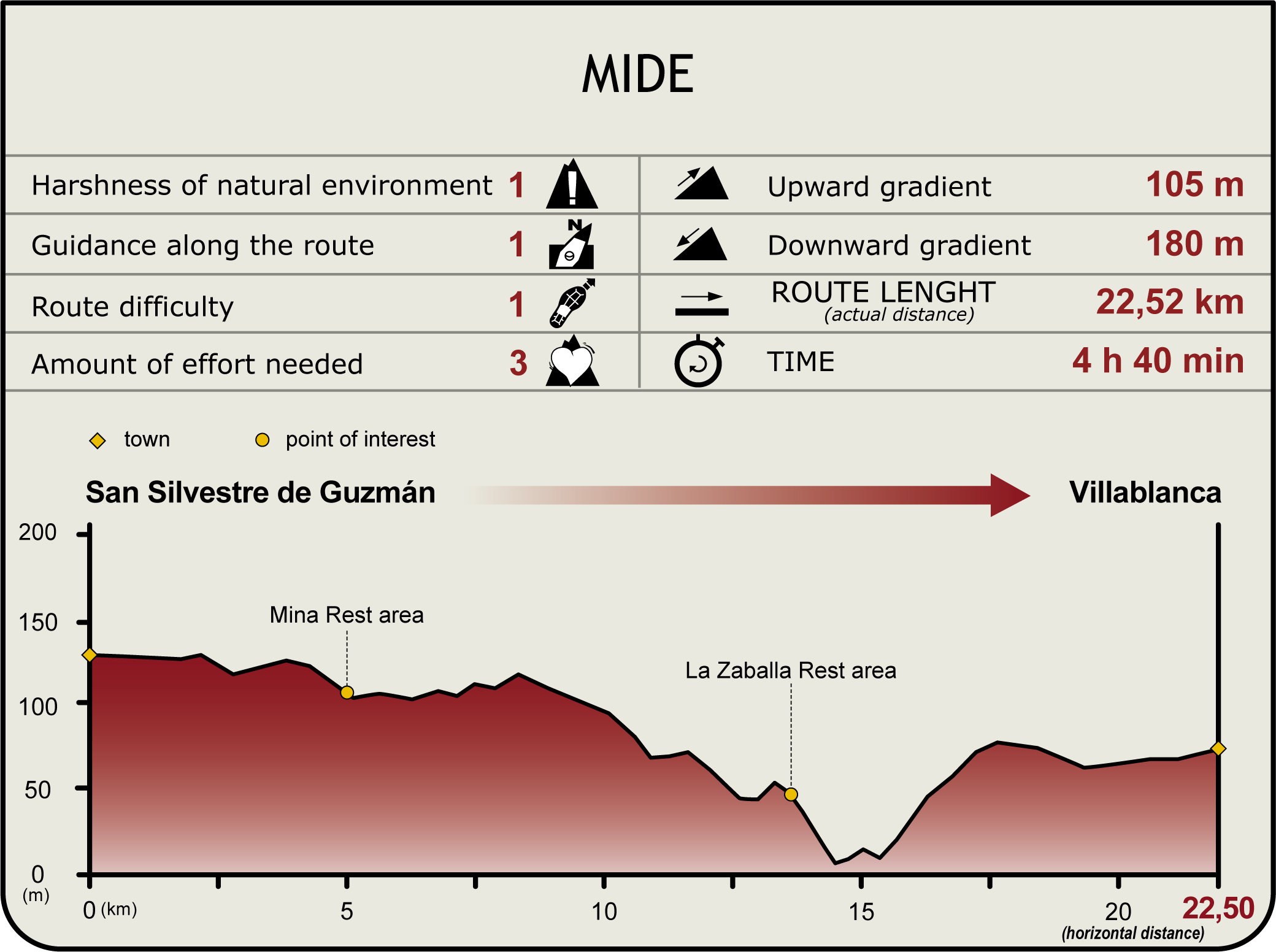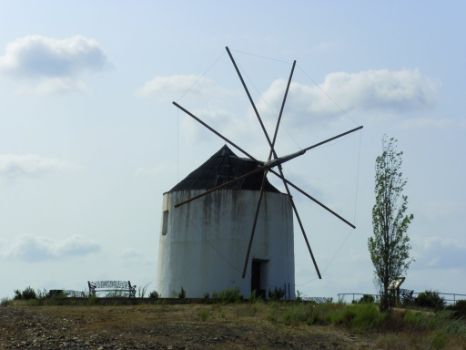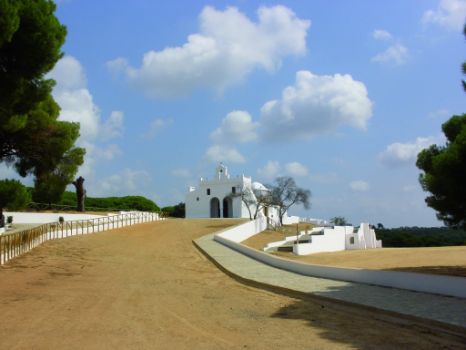Net of Natural
Trails

Stage 43: San Silvestre de Guzmán - Villablanca
Description
Through the windmill route
This Stage stands out for its ease. It runs entirely along wide dirt roads, far removed from the River Guadiana, along the Vereda de la Zaballa, a traditional cattle track. The olive and dehesa landscape in the first half of the route is dotted with large wind turbines. The slopes are increasingly gentle, and the terrain becomes more even. One can always see in the distance the Puente del Centenario, located close to Ayamonte.

The Stage begins at the edge of San Silvestre de Guzmán, where the route follows the signs to Lote de los Labrados farmstead. The Trail runs along Vereda de la Zaballa. At the beginning of the route, there is a well-preserved, old windmill known as Molino de Vilán. Past the windmill is a rest area with beautiful views of the surroundings. The vegetation consists of holm oak (Quercus ilex), eucalyptus (Eucalyptus sp.) and shrubs, primarily rockrose (Cistus spp.) and wild olive trees (Olea europaea var. sylvestris).
These lands honour their past by building the future on renewable energies. Although not built with stone, the modern 21st windmills that populate the landscape also leverage the wind power available in this area.
About one kilometre from the starting point, there is a rest area with wooden tables and benches. The path continues straight ahead to Cabezo de Mina Rest Area in a pleasant setting with little vegetation, a few eucalyptus trees and scattered rockrose thickets. It also has a small shelter with a wooden table and benches. At the intersection, the route continues to the left, to another intersection where, this time, it turns right.

Following the road signs, the route arrives at La Zaballa Rest Area, which is also equipped with a shelter and benches. Close to this recreational area is another intersection. The path to the left leads to Villablanca (6.5 km), leaving San Silvestre de Guzmán behind (16 km), and, to the right leads to Ayamonte (13.5 km).
The Trail continues along the path to Villablanca, through a low mountain landscape dominated by holm oaks, olive groves, a few isolated stone pine stands (Pinus pinea) and rockrose.
At Villablanca, one may visit the 12th-century parish church of San Sebastian. The Mudejar shrine of Nuestra Señora de La Blanca is also worth a visit. From here, one can enjoy a landscape framed by pine forests, and, on a clear day, see the sea in the horizon. Another site of interest is Molino de Antonio Pérez, with a rest area. From here, one can enjoy sweeping views of Villablanca and its surroundings.
If one is not still tired, an alternative circular route (14.5 km) begins at the mill.
Management Entities
Sites of interest
Profile





